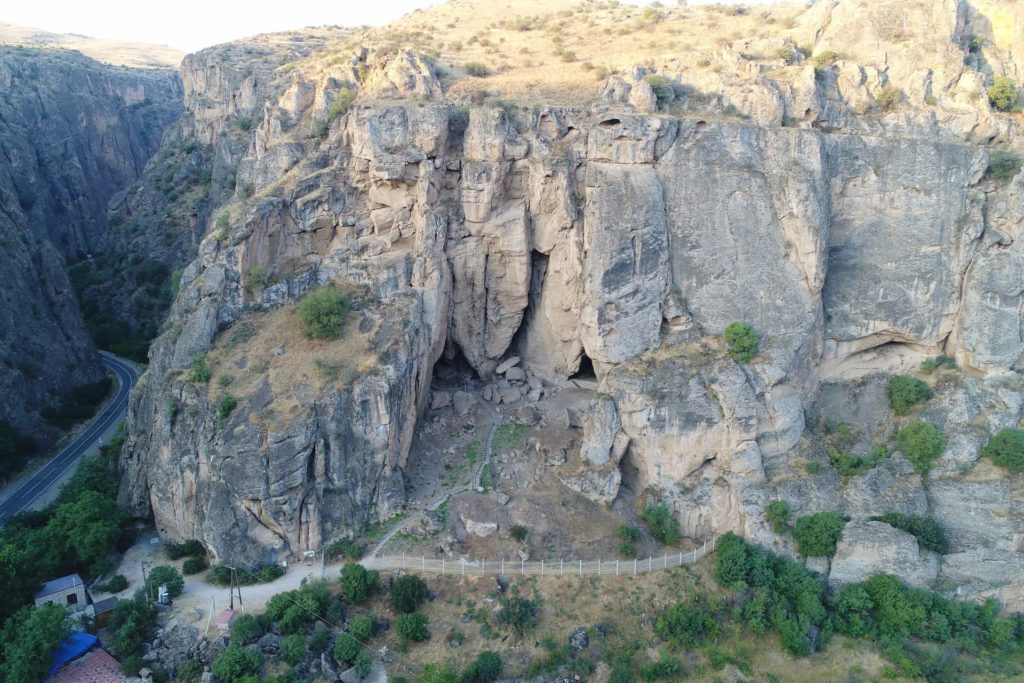The landscape and climate of Vayots Dzor are very suitable for horticulture, and especially for viticulture.
The basis of grape cultivation here was established in the beginning of the IV millennium BCE, which is confirmed by archaeobotanical finds from excavation of the Late Chalcolithic layers in Areni-1 cave, located near the confluence of the rivers Gnishik and Arpa. The existence of millennial traditions behind the now flourishing local viticulture is shown by the archaeological data presented: traces of vineyards are visible in close proximity to the Bronze and Iron Age, Hellenistic and Medieval fortresses and settlements. Irrigation systems, as well as tools and various implements with economic, ritual and other significance were discovered during the excavations. The old vineyards spread along both sides of the River Gnishik valley and their irrigation systems leave distinctive remains. There are references to these vineyards in historical sources and inscriptions. Thirteenth century historian Stepanos Orbelyan in his «History of Syunik», while talking about the construction of the Saint Stepanos church of the Noravank Monastery and listing the lands transferred to its ownership, refers to Gnishikadzor, using the name Tmadzor. In a 1261 inscription in the narthex of the same church, prince of princes Smbat Orbelyan records having given his vineyard in Ginishikadzor to the monastery (TRUSTING IN THE LORD, I – PRINCE OF PRINCES SMBAT, WITH GOOD WILL OF MY HEART GAVE TO HOLY NAKHAVKA MY OWN VILLAGE AZAT WITH ITS BOUNDARIES, MOUNTAINS AND FIELDS, AND MY VINEYARD OF GINISHIKADZOR…). The majority of donative inscriptions at Noravank refer to vineyards, which indicates the large number of such possessions owned by the monastery and the decisive role played by viticulture and winemaking in its economic activities. Noravank was a large scientific, educational and cultural center, where the creation of manuscripts and architecture and the art of composing khachkars flourished, precisely because of its economic success. A noteworthy inscription on a khachkar, which was discovered in the medieval village near the remains of the Noravank Monastery, refers to planting a vineyard and the construction of a winepress. Both viticulture and winemaking in Armenian tradition were of great cultural significance, serving to unite and form the shared identity of the inhabitants of the Armenian highlands, who valued labor, fertility and feasting.

The landscape of Gnishikadzor represents a specific ecological niche, characterized by cold water springs and a rich diversity of flora and fauna; the grapevine plays a key role. At present in the areas that flank the River Gnishikadzor the wild progenitor of domestic grapes – the wild forest grapevine (Vitis vinifera, subsp. silvestris) still exists. It is also possible to find feral forms of grapevine in the neighborhood, which are result of cultivated varieties having grown without any human interference for a long time, and these have re-adopted the lifestyle of their wild ancestor – climbing up trees and rocks. Some cultivated varieties grow in the historical vineyards which spread along both sides of the Gnishik valley, among which the native variety Sev Aeni dominates. Archaeogenetic studies have shown that this variety has been cultivated locally since ancient times. The recent studies of DNA extracted from grape stems found during the excavations in Areni-1 cave and dating to the Early Medieval period (780-1000 AD, calibrated) show very close genetic relationships between the medieval grape remains and the Sev Areni variety which continues to grow in the Gnishikadzor’s abandoned vineyards.
Archaeologists have uncovered evidence for modern human and early human habitation in the Gnishikadzor canyon that begins in the distant past and continues up until today. Two caves located near the northern entrance of this canyon, called Areni-1 and Areni-2, contained early stone tools manufactured by Homo erectus. From this period of increasing societal complexity, both the world’s oldest wine-making equipment and the world’s oldest preserved leather shoe have been found in Areni-1 cave. The earliest archaeological investigations of the Gnishikadzor canyon, which took place at the beginning of the XX century, also uncovered evidence for human activity during the III to I millennia BCE (the Bronze and Iron Ages). Many caves in the valley, including the «Magelan» cave, as well as Areni-1 and Areni-2, contained evidence for continuous use between the II century BCE and the VIII century CE (the Hellenistic and Early Medieval periods). Excavations in Areni-1 uncovered textile fragments, weights for a scale, coins, fragments of glass objects and glazed pottery sherds. Traces of ancient vineyards and walls led archaeologists to excavate within this Gnishikadzor Archaeological Complex beginning in 2015. The research goal was to clarify the chronology and the productive-economic functions of the visible remains such as wine presses, water mills, and storage cellars. Between 2015 and 2019, archaeologists uncovered an area of around 500 square meters that contained evidence for structures and artifacts from multiple periods of occupation and construction stretching back at least 6000 years. Archaeologists have not yet finished uncovering all the secrets of the Gnishikadzor Archaeological Complex, so excavations will continue into the future!
